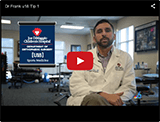Amputation
Amputation is the surgical removal of a part of the body as a result of a traumatic injury or disease conditionssuch as Diabetes or Peripheral vascular disease (PAD).
Amputation may be performed if:
- There are wounds on your leg which do not heal
- There is poor blood flow to the limb
- Severe trauma or injury is caused to the limb due to an accident
- There is a tumor in your limb
- Severe burns which have badly affected the limb
Surgery for limb amputation is performed under general anesthesia. During the procedure, your surgeon removes the affected limb or apart of the limb based on the extent of damage. The surrounding tissues and muscles which are damaged are also removed. The healthy tissues and areas of healthy bone are smoothed, blood vessels and nerves are sealed, and the muscles are shaped to facilitate the addition of artificial limbs if applicable.
Like all surgeries, amputation may be associated with a few complications such as:
- Loss of range of motion in the surrounding joints of the amputated limb
- Infection at the site of the surgery
- Improper wound healing after amputation
- Feeling that the leg is not amputated
-
Personalized Physical Therapy Puts Bryant Back on the Court
Bryant could hear the whistles blowing as he walked by the gymnasium.
View more -
No off-season for sports injuries
As a new season of school sports and youth leagues gets underway,
View more -
Student Athletes Benefit from Individualized Treatment at U18 Sports Medicine
Becoming involved in a sport is one of the healthiest things that a child can do.
View more -
For young athletes, injuries need special care
More programs are using procedures and surgical techniques tailored for kids.
View more -
Dr Frank u18 Tip 1
 View more
View more -
Segment U18 Tip with Dr Frank 1
 View more
View more -
Dr. Frank’s 2010 WQAM high school football game halftime interviews
View more




 Menu
Menu






 In The News
In The News Hollywood Office
Hollywood Office

![[U18] Sports Medicine](https://www.kidbones.net/wp-content/themes/ypo-theme/images/u18-sports-medicine-performing-arts-logo.png)












